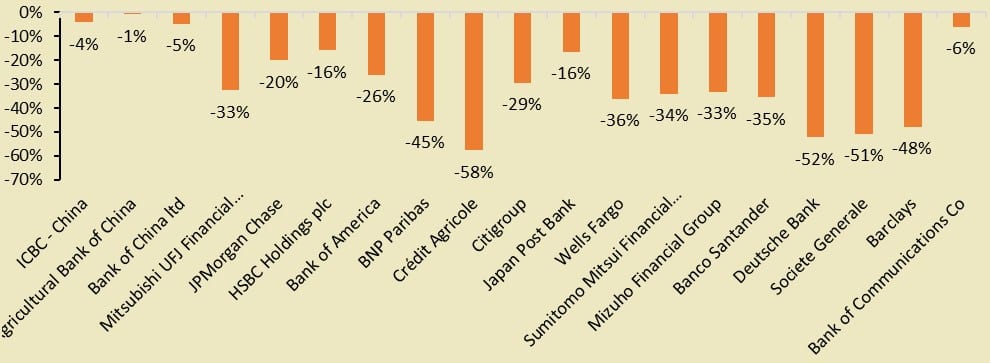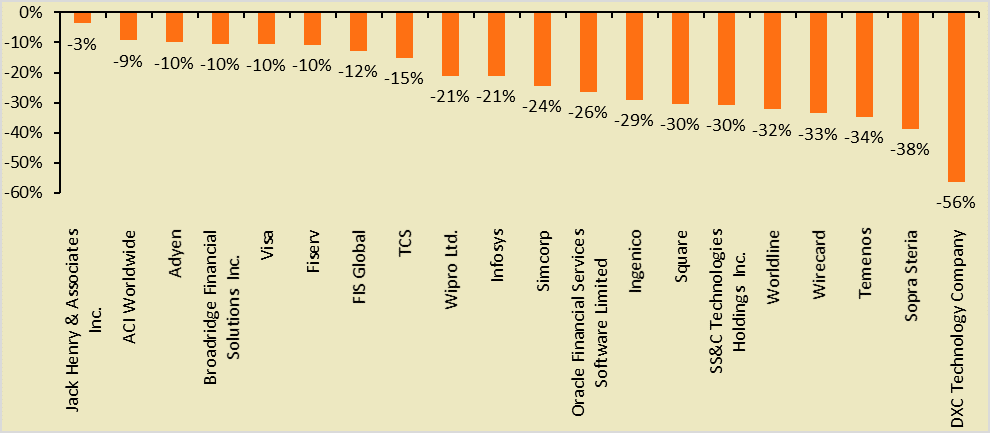CEO letter from Klaus Holse at SimCorp
In the next decade, asset management M&A will be an important trigger in containing cost growth, but this alone will not create scale and efficiency. Clear operating models and integrated systems are critical to supporting success.
Key to providing this, are vendors who can take up the role of trusted partners, to expand their services and open up platforms, for long-term scale and AUM growth.
 With a spell of new M&A deals already at play, it is safe to predict that in 2020 we will see the consolidation of the institutional investment industry continue at pace, in order to stem outflows and stay relevant in the long-term. In February alone, we saw the buyout of Merian Global Investors by rival firm Jupiter Asset Management and US fund giant Franklin Templeton acquire Legg Mason. Meanwhile, Morgan Stanley bolstered its wealth management business by purchasing E*TRADE.
With a spell of new M&A deals already at play, it is safe to predict that in 2020 we will see the consolidation of the institutional investment industry continue at pace, in order to stem outflows and stay relevant in the long-term. In February alone, we saw the buyout of Merian Global Investors by rival firm Jupiter Asset Management and US fund giant Franklin Templeton acquire Legg Mason. Meanwhile, Morgan Stanley bolstered its wealth management business by purchasing E*TRADE.
M&A is no silver bullet
While global AUM growth, largely fuelled by Asia, may paint a positive picture, global asset management cost growth continues to exceed organic revenue growth, according to recent findings from Mckinsey & Company. Meaning on the other side, is a tale of falling profit margins, where fee compression and unsustainable operational leverage are joined by a growing assault of market pressures.
Beyond short-term AUM growth, M&A needs to take a good look under the hood, to first rationalize the high operating leverage impacting profit margins. Today, AUM growth no longer guarantees as much revenue as it once did. In fact, according to Bain & Co, it now takes more AUM to generate the same amount of revenue as it did 10 years ago, squeezing the spread from 15bps in 2007, down to an estimated 8bps by 2021. In this tough climate, the key to protecting margins will be tighter control over costs. Investment operations in particular are increasingly contributing to the overall cost base of an asset manager, with costs in North America growing twice as fast as Western Europe.
While M&A can be considered a good starting point in bolstering a firm’s defenses from these market pressures, on its own it cannot create the scale and efficiency needed for long-term success. To build true scale and address the market challenges standing in the way of future prosperity, will require a fundamental shift. Moving away from the traditional operational status quo, of costly legacy systems, fragmented point solutions and outsourcing, to a clear operating model that can streamline a firm’s architecture, and form an integrated backbone across operations. Ownership of data will be a core element to this, strengthening cost efficiency, scalability and delivering significant value to a firm, in a way that outsourcing simply cannot provide.
Delivering everything as a service
The bottom line is that asset managers will need to deliver more value at less cost. To achieve this effectively, we will inevitably see a significant shift in the way vendor services are consumed, and while many in the industry play catch up to a front-to-back way of service delivery for their clients, the goalposts are already moving. If we, as vendors, are to fully meet the needs of asset managers, both today and in the future, it will no longer be enough to simply provide a front-to-back platform in isolation.
While in the past, firms acted as fortified islands when it came to their operations, the future will necessitate open platforms supported by managed services and not tools and technologies alone, to truly aid M&A efforts and solve both industry and firm-wide challenges. Here, vendors in the industry have a significant role to play, demonstrating how greater value can be achieved, by delivering beyond their traditional remit. By forming trusted partnerships, vendors will need to manage a wider footprint of investment management operations, delivering everything as a service. Empowered by the cloud, vendors will need to take over the time-consuming maintenance of the systems, processes, and data owned by the asset manager, while also being more accountable for tangible business outcomes.
With the changing needs of institutional investors, the onus will be on vendors to provide a holistic, full-service approach, with proven faster time to value and reduced operational burden, risk and cost. This will not only require a higher degree of support but also responsibility from vendors if they are to increase efficiency and demonstrate additional value and expertise across the investment chain successfully.
Take, for example, data management, which continues to create significant cost and a drain on already burdened operations teams. Vendors can support firms in capitalizing on the mountains of data they hold, by utilizing an open platform, augmented by a host of managed services. The combination of which can rationalize the incredible volumes of market data that presently floods the front office. At the same time, it can liberate firms from arduous and costly data-driven reconciliation. Ultimately, this delivers one source of truth for all processes, enabling clients to move vital resources and manpower away from firefighting data and instead onto alpha-generating tasks.
The battle of ecosystems
As well as managed services that enable firms to focus on the core of their business, vendors will also need to facilitate the flexibility firms need, to differentiate from the competition and gain an edge. The creation of an open ecosystem is the way in which we believe vendors can deliver this flexibility, along with true optionality – choice without obligation. Doing so will provide long-term scalability and positive change, not just to the industry’s financial prosperity, but also its social and environmental contribution.
If the introduction of managed services extends the reach and responsibility vendors will have inside a firm’s investment operations, then an open ecosystem is the means to connecting firms outside, to leverage innovation in the broader fintech space. This is fundamentally where we see the next race, beyond that of front-to-back platforms; The battle of ecosystems.
Put simply, open systems are increasingly overtaking those that are closed. Across both consumer and business domains, traditional business models are being put to the test. The creation of a highly networked industry ecosystem, one that enables real innovation, integration and co-creation, will in our view create greater flexibility and drive competitiveness, optimizing both sides of the coin; AUM growth and cost control.
We are already seeing this change towards openness, with the number of cross-vendor/custodian partnerships in the industry, including our own recent integration partnership with BNY Mellon. Today, SimCorp has over 50 partnerships within the industry, but we can easily predict this growing to a network of hundreds of partners, offering services, solutions and applications that are complementary to our core platform and managed services.
While these partnerships form a new co-dependency between service providers to offer something much bigger than themselves, it is ultimately the institutional investment industry that will be its biggest beneficiary. It is here, vendors can unlock further value for clients, taking away the research, development and integration work they would otherwise need to take on themselves, by delivering emerging technologies such as machine learning, in collaborations with a host of FinTechs and start-ups. An example is SimCorp’s recent announcement with New York start-up Alkymi[4], where we aim to solve the industry headache over processing unstructured data in alternative investments. It is here, we feel we can maximize the power and scale of FinTechs, RegTech, cloud and data providers around the world, and even clients themselves, to offer proprietary, third-party and co-created outcomes, via our platform.
2020 will see the institutional investment industry undergo a dynamic transition, as it continues to address the operational baggage that has shadowed its potential for so long. M&A provides a substantial opportunity in overcoming current heightened conditions, as well as reducing spiralling costs. However, it will be the role of trusted partnerships with vendors who can take on more operational responsibility and offer enhanced services, that will be vital in driving the freedom to focus on success. In the battle for ecosystems, the successful partners will be those vendors who can open up their platforms and architectures, to deliver a thriving ecosystem and abundant opportunities for long-term, sustainable growth.
Here, SimCorp is optimally placed, being neither asset manager nor custodian and with only the ambition to drive value and the outcomes that support our clients’ success.
Klaus Holse
CEO of SimCorp

 By Bhavin Turakhia,
By Bhavin Turakhia,



